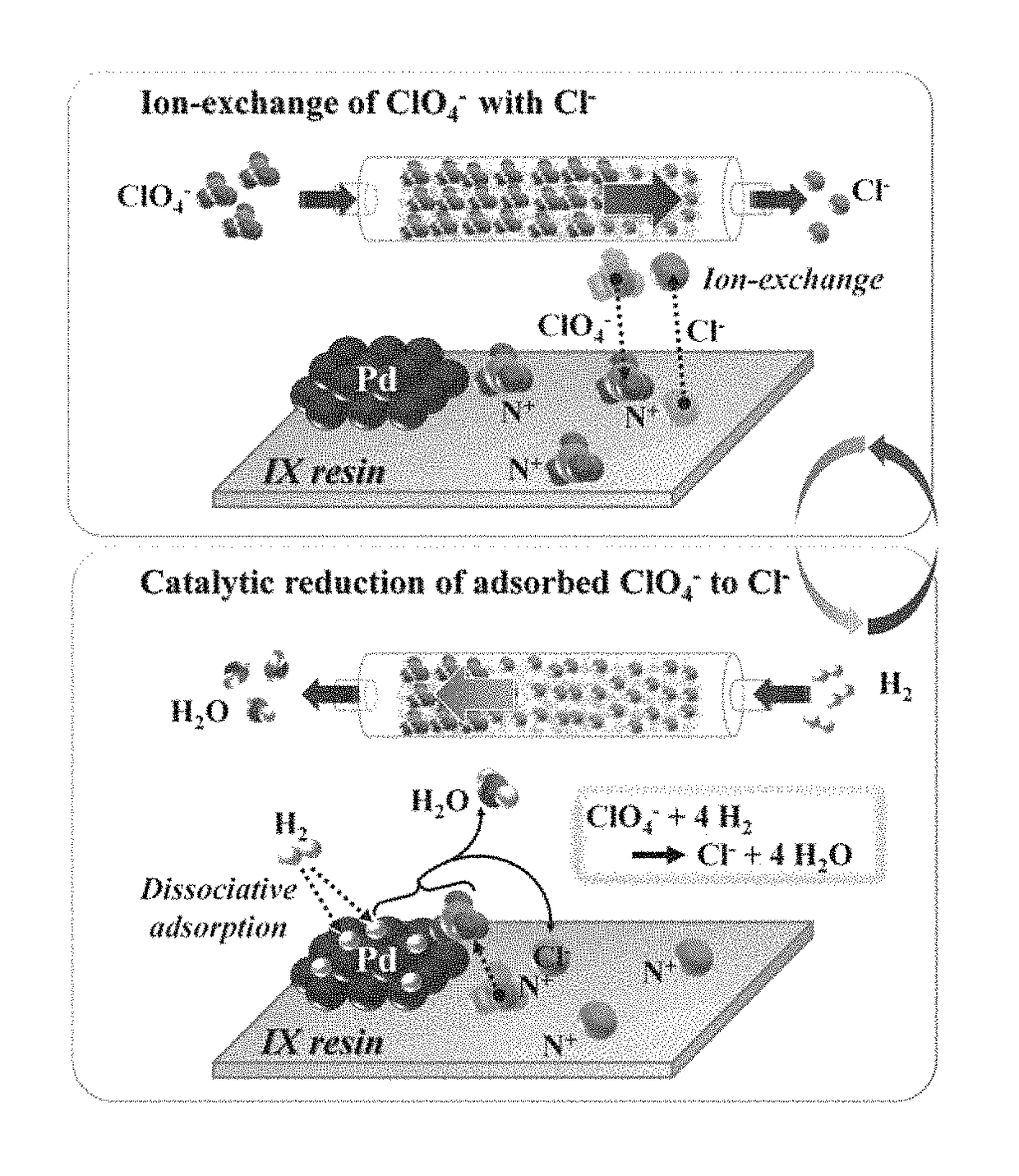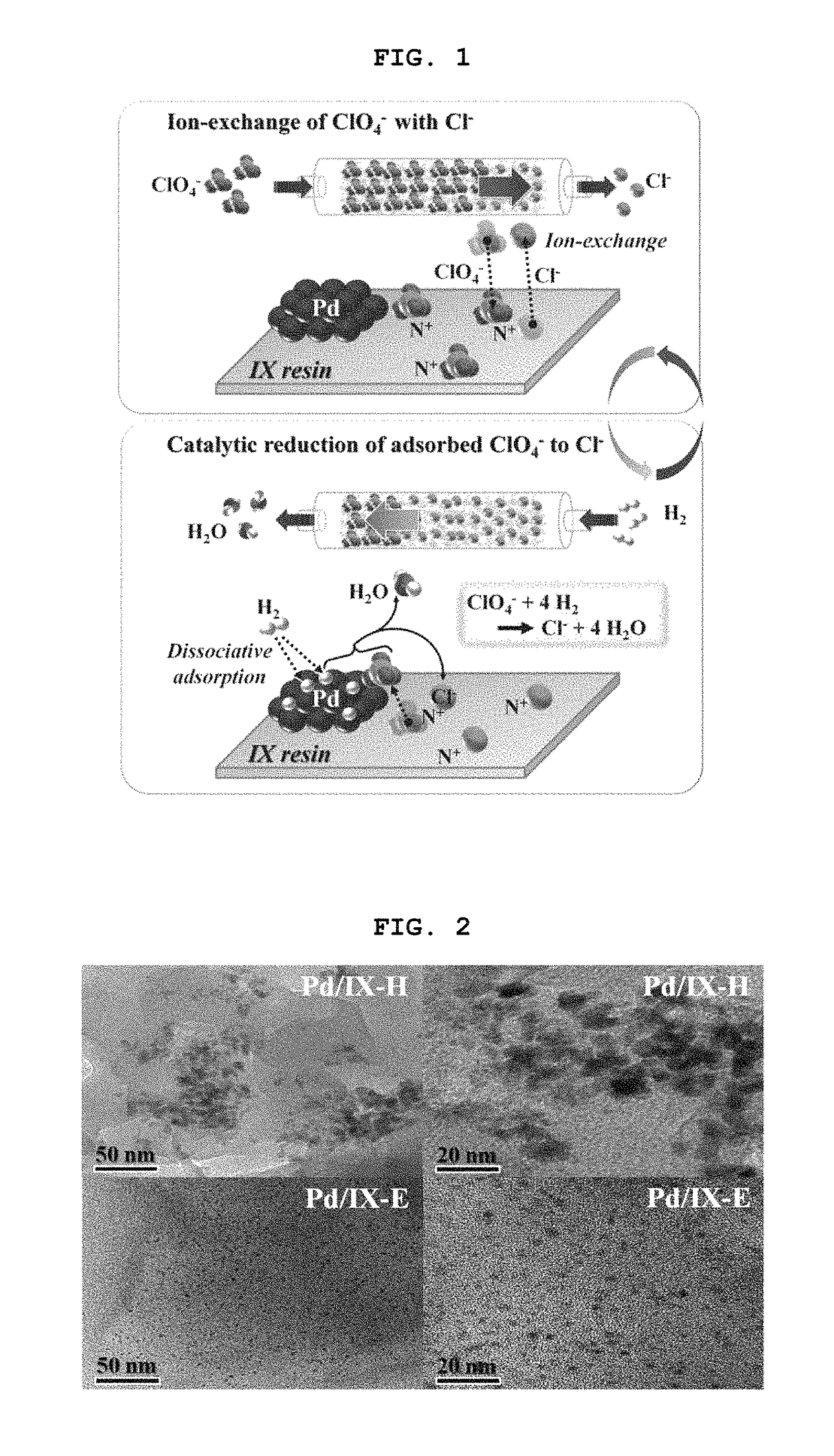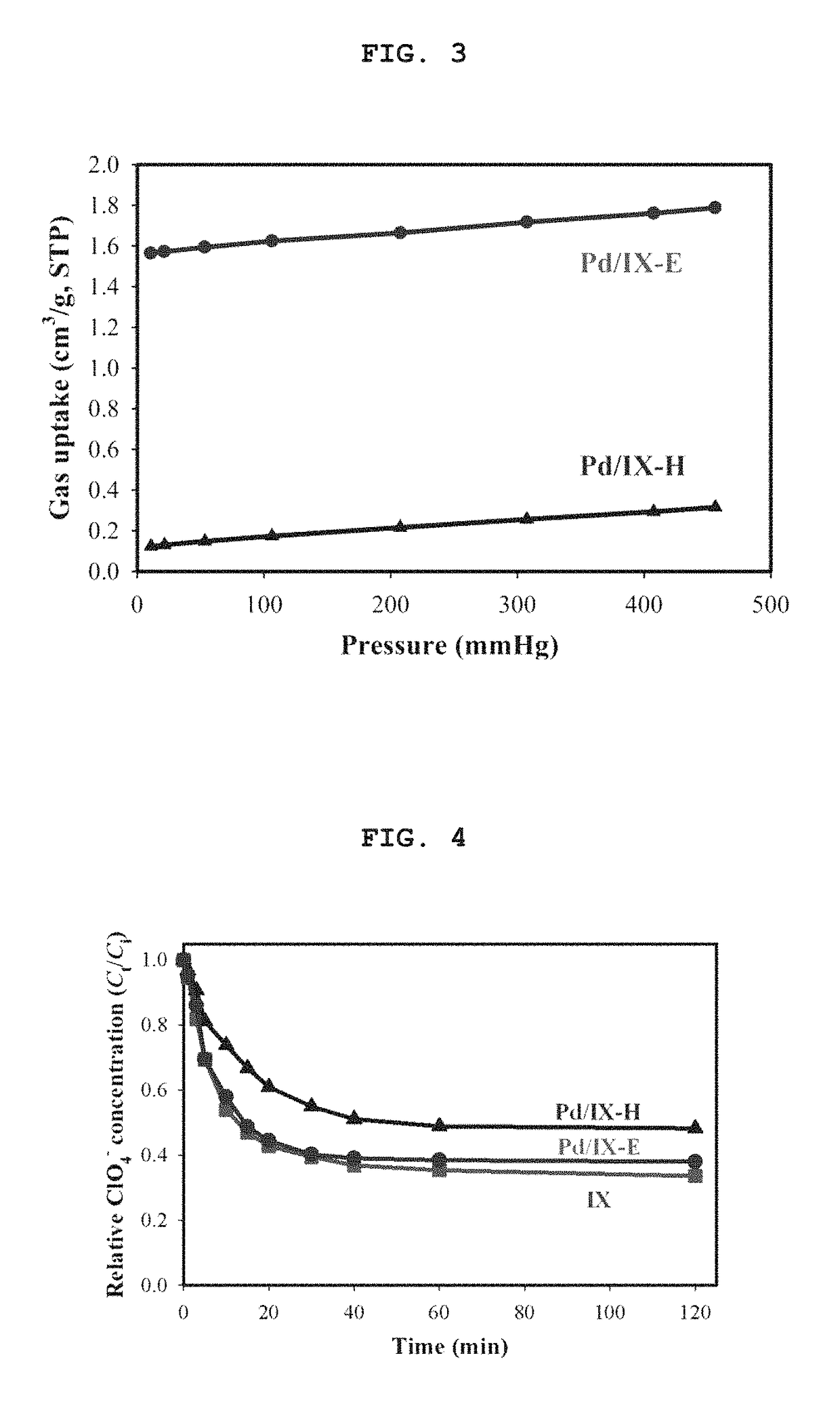Metal-supported anion exchange resins and method of remediating toxic anions using the same
a technology of anion exchange resin and toxic anions, which is applied in the direction of metal/metal-oxide/metal-hydroxide catalyst, water/sewage treatment by ion exchange, physical/chemical process catalyst, etc. it can solve the problems of inability to meet the requirements of continuous treatment of waste water, inability to easily integrate homogeneous catalysts with soluble phosphorus or sulfur reducing agents, and inability to meet the requirements of biological processes. , to achieve the effect o
- Summary
- Abstract
- Description
- Claims
- Application Information
AI Technical Summary
Benefits of technology
Problems solved by technology
Method used
Image
Examples
example 1
on of Anion-Exchange Resin on which Hydrogen Activating Metal is Supported
[0072]For supporting Pd clusters on the resin, [PdCl4]2− ions were first ion-exchanged on the resin. In a typical synthesis for supporting 2 wt % Pd, 1 L of 3.8×10−3 M [PdCl4]2− aqueous solution was prepared by dissolving PdCl2 (3.8×10−3=1) in 1 L of 0.17 M HCl solution. 20 g of dry ion-exchange resin (38 g by wet resin basis) was suspended in the resultant solution and stirred at room temperature for 6 h. The resin was collected by filtration, washed thoroughly with deionized water and gently dried at 333 K. The ion-exchange resin loaded with [PdCl4]2− was reduced by two different methods, i.e., reduction with H2 and ethanol reduction. In the H2 reduction, the resin was placed in a plug-flow Pyrex reactor and treated under H2 (flow rate=50 mL / min / g) at 373 K for 2 h. After reduction, the reactor was purged with He (flow rate=50 mL / min / g) for 2 h at 373 K and cooled down to room temperature. In the ethanol red...
example 2
nged Amounts of Perchlorate Ion Over Time
[0078]In order to confirm anion ion-exchange ability and ion selectivity of Pd / IX-H and Pd / IX-E prepared in Example 1, an anion exchange experiment was carried out with an anion-exchange resin (IX) not supporting the metal cluster, an anion-exchange resin (Pd / IX-H) supporting 2 wt % of metal (Pd) by reducing Pd with hydrogen gas, or an anion-exchange resin (Pd / IX-E) supporting 2 wt % of metal (Pd) by reducing Pd by an alcohol reduction method. Herein, in the case of IX, the ion-exchange experiment immediately proceeded, while in the case of Pd / IX-H and Pd / IX-E, their weights were measured in a dried state, and they were pre-swelled for 24 hours in distilled water under a condition of room temperature before ion-exchange process, thereby preventing the ion-exchange speed from being lower due to a dried sample.
[0079]In order to confirm the ion-exchanged ClO4− amount over time in the anion-exchange resin on which the hydrogen activating metal is...
example 3
hange Experiment of Anion-Exchange Resin on which Hydrogen Activating Metal is Supported
[0081]In order to confirm anion ion-exchange ability and ion selectivity of Pd / IX-H and Pd / IX-E prepared in Example 1, the ClO4− removal ratios depending on the sample amounts of an anion-exchange resin (IX) not supporting the metal cluster, an anion-exchange resin (Pd / IX-H) supporting 2 wt % of metal (Pd) by reducing Pd with hydrogen gas, or an anion-exchange resin (Pd / IX-E) supporting 2 wt % of metal (Pd) by reducing Pd by an alcohol reduction method, were compared.
[0082]In the present ion-exchange experiment, each ion-exchange experiment proceeded in a pure solution only containing perchlorate (10 mg / L, ClO4−), and a simulated solution containing a high concentration of sulphate (1000 mg / L, SO42−), thereby confirming the effect on the ion-exchange capacity when competent ions are present in addition to ClO4−.
[0083]The ion-exchange experiment proceeded while IX, Pd / IX-H and Pd / IX-E with varied ...
PUM
| Property | Measurement | Unit |
|---|---|---|
| activation energy | aaaaa | aaaaa |
| temperature | aaaaa | aaaaa |
| temperature | aaaaa | aaaaa |
Abstract
Description
Claims
Application Information
 Login to View More
Login to View More - R&D
- Intellectual Property
- Life Sciences
- Materials
- Tech Scout
- Unparalleled Data Quality
- Higher Quality Content
- 60% Fewer Hallucinations
Browse by: Latest US Patents, China's latest patents, Technical Efficacy Thesaurus, Application Domain, Technology Topic, Popular Technical Reports.
© 2025 PatSnap. All rights reserved.Legal|Privacy policy|Modern Slavery Act Transparency Statement|Sitemap|About US| Contact US: help@patsnap.com



